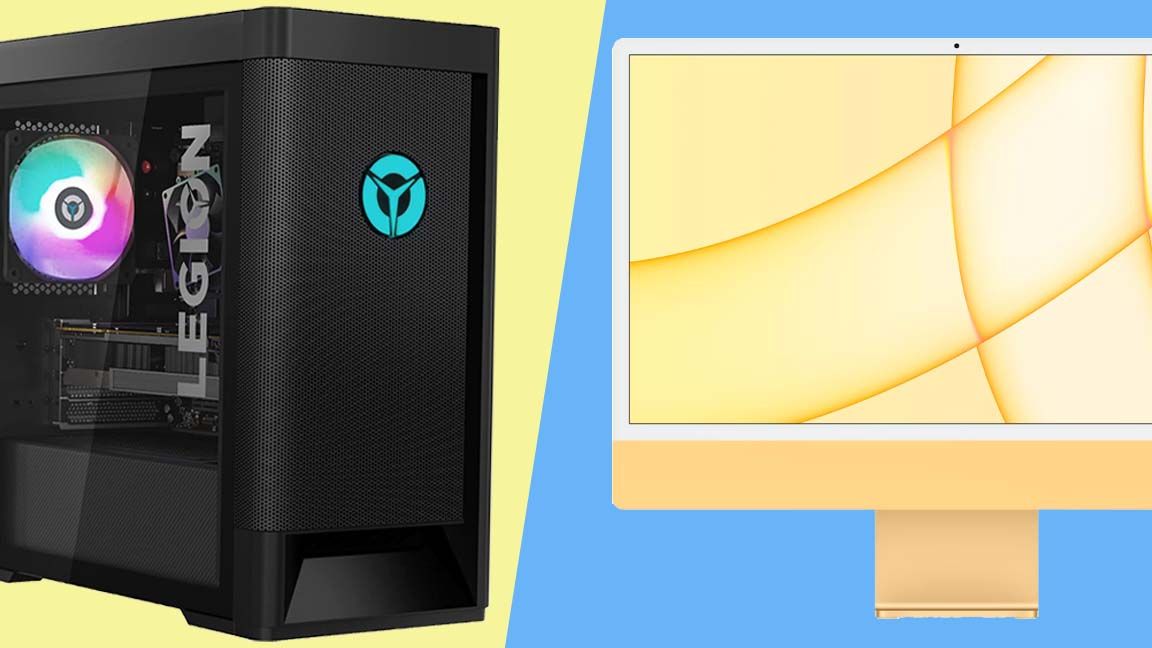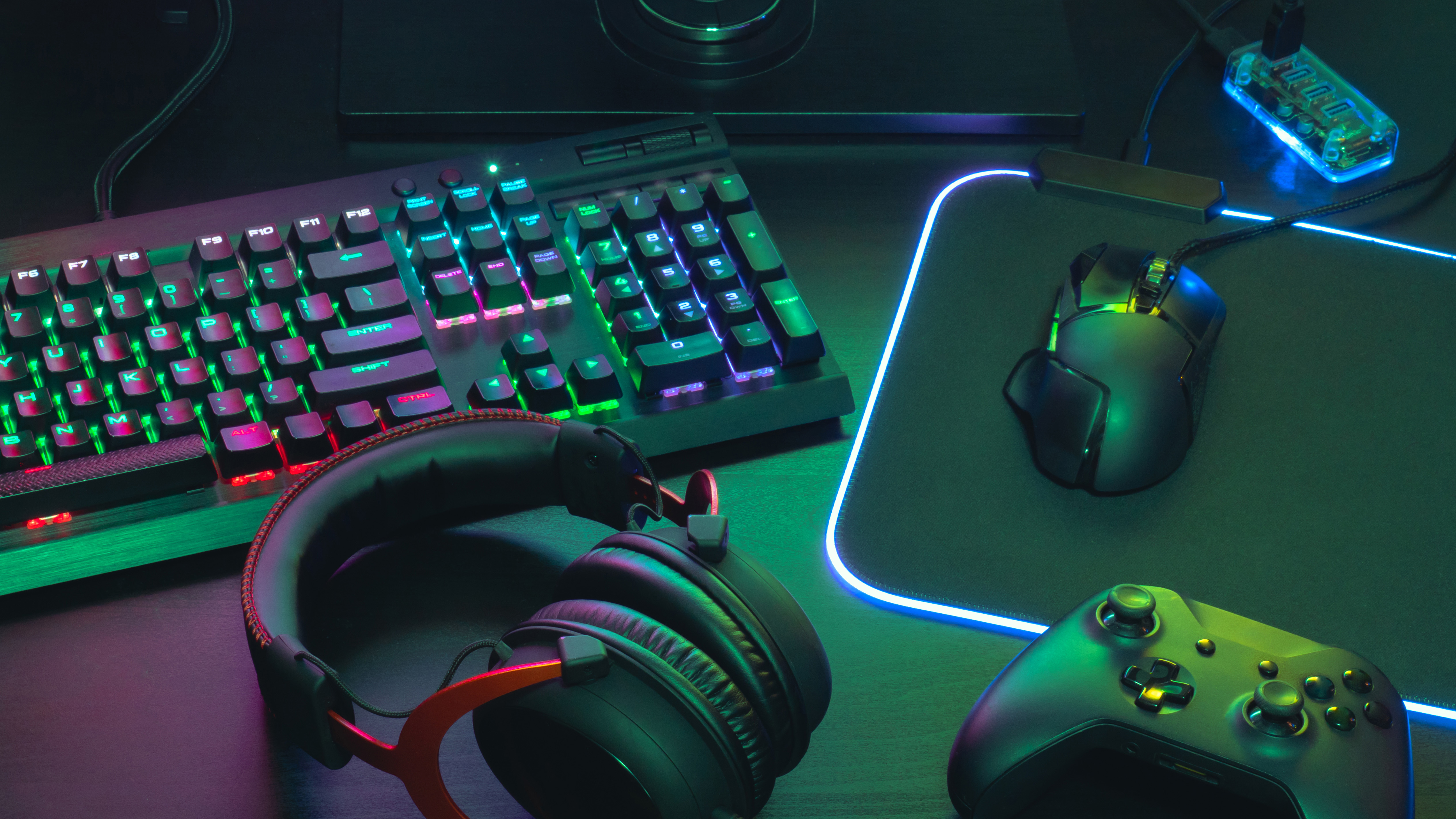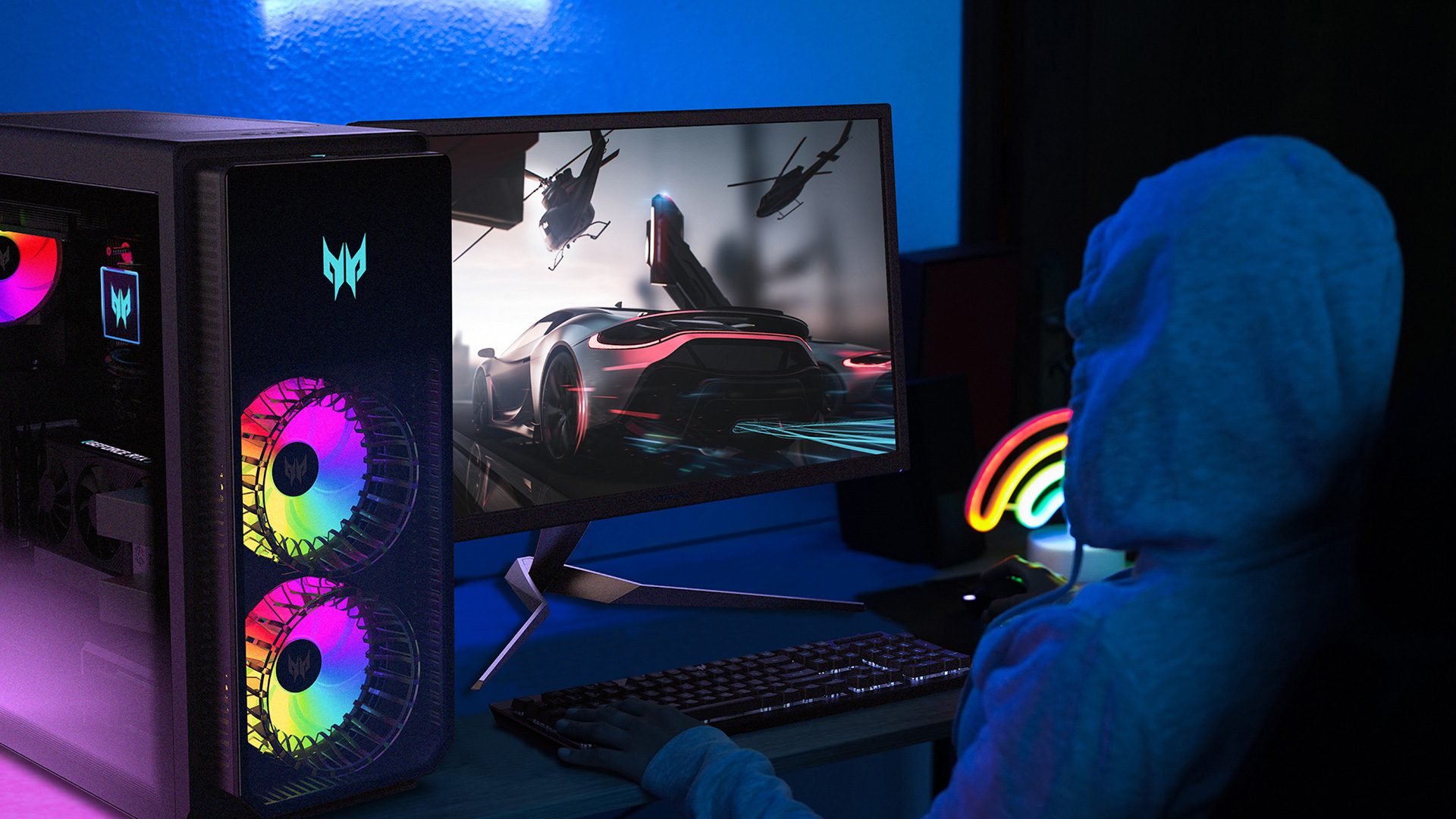
[ad_1]
To begin with, it is essential to understand that all-in-one (AIO) computers are usually considered desktop computers. However, they differ from the rest of the desktop computers, like towers, mini or stick computers, according to several factors; portability, affordability, design and performance to name a few.
An AIO computer sports everything that is necessary as a desktop component. So, you get a processor, memory, video card, screen and speakers – all in the same device. On the other hand, all other types of desktop computers above mentioned are machines that host only the processing unit of a computer. They consist of a processor, memory, and graphics card among other internal parts. Therefore, they must be paired with a monitor, speakers, keyboard and mouse.
Both AIO and non-AIO desktops have their fair share of pros and cons. In this guide, we try to draw a comparison between regular AIO computers and all other types of desktop computers. We’ve categorized the discussion below into price, design, and performance sections.
All-in-one PC vs desktop PC: price
- Desktop computers offer more flexibility when it comes to purchasing additional components
- AIO computers are much more expensive to repair
The flexibility that comes with buying a desktop PC makes it more affordable than an AiO PC. This means you can easily upgrade your desktop computer with a newly released CPU or GPU instead of investing in a new machine. However, in the case of an AIO computer, you don’t have much of a choice. Since AIOs come as a complete package that a brand has already put together, there is little flexibility offered in terms of customization and upgrades. Therefore, you should replace the machine as a whole when the components inside become obsolete.
Desktop computers are also more affordable to repair. In general, it would cost much less to open a desktop and repair the component that is causing the problem. In the case of AIO computers, repairs can end up being quite expensive because they are harder to touch. if they even allow the matter to be fixed.

All-in-one PC vs desktop PC: design
- AIO computers have a better form factor and take up less space
- You don’t need any additional purchases with AIO
- Desktop computers are extremely difficult to move but easy to configure and repair
An AIO packs everything into a small body and doesn’t take up as much real estate on your desk as a desktop PC. The latter is not only considerably larger in itself, but all its various components also take up additional space. You might find a relatively slim and low-profile desktop, but you would still need enough space for all the other accessories.
Closely related to the point mentioned above is the form factor of an AIO computer. An AIO computer beats a desktop computer by a mile. Its body is slimmer and much more attractive than that of a desktop. This is not to say that desktop computers are unpleasant in appearance. In fact, the modern ones are equipped with attractive RGB lighting that enhances their overall aesthetics. But if form factor means a lot to you, definitely go for an AIO.
An AIO computer also removes the burden of additional shopping. Since you get everything in a single package, you don’t need to spend your time and energy looking for and buying accompanying accessories. This can be especially useful if you are someone who has limited knowledge of this area and wishes to update without going too deep into research. Whether or not this applies to you, please check out our guides on the best computer speakersmice, keyboardsand monitors for some additional help.

Although AIO computers aren’t exactly what many would call portable, especially compared to laptops, they can still be moved much more easily than other desktop computers. Moving a desktop computer, if you ever need to, would be a hassle. Collecting its various peripherals, collecting all its wires and cables, and managing the weight of it all is not easy. Therefore, they strongly limit you to your workspace, much more than an AiO computer does.
There are areas where other desktop computers shine as well. Above all, they offer an easily customizable design. As previously mentioned, it is very simple to open a desktop and adjust the components inside. This can come in handy when you’re in the mood to upgrade. You can simply replace a specific part with the latest, latest version of it.
Whereas, with most AIOs, you’re pretty much stuck with the same body and configuration. You probably won’t have the flexibility to upgrade to newer components that best suit your needs. This could also result in problems when any of your AIO’s features become outdated.
The fact that an AIO computer is also much more difficult to repair is closely related to the point above. On a desktop computer, there are several quick fixes that even a layman with little technical knowledge can manage. These include replacing a specific component, cleaning the fan, etc. AIO, on the other hand, is quite difficult to open. In some cases, it does not even allow the user to touch its internal parts. And when it does, its hardware is often wildly unaffordable.
The hardware inside an AIO is often soldered so tightly that it doesn’t allow for tweaking. Additionally, opening AIO computers is considered against the warranty in some cases. Repairs end up being a huge hassle, and the user has no option but to send the entire device to a technician. This not only costs the user significant money, but also deprives them of a computer for a considerable time, causing inconvenience. This also means that if there is a problem with your screen or the speakers inside, you will also have to send the whole thing in for repair.

All in one PC vs desktop PC: performance
- Processing power depends on the model of your device
- AIOs are easier to install and often offer bright screens with touch control
Effectively, both AIOs and other types of desktop computers can be powerful or not depending on their model. For example, most Windows-powered AIOs are not very powerful in terms of graphics. This is due to the fact that they feature integrated graphics cards, instead of dedicated ones. These include Intel or AMD graphics, which tend not to perform as well as the Nvidia RTX cards you’ll find in more robust desktop PCs and gaming computers.
On the other hand, some Apple AIOs have an extremely powerful processor chip, the M1, which is great for graphics-intensive tasks like video editing, 3D graphic design, and photo editing. Therefore, in the end, the performance of a machine depends on the processing power and graphics of the model you choose.
If your job requires you to use memory-intensive software or if you’re into serious gaming, an AIO computer with integrated graphics may be a bummer for you. Even if you manage to run intensive software on it, it can result in thermal strain due to the lack of ventilation.
- Winner: Link, depending on what you need
All in one PC vs Desktop PC: Upgradability
- Desktops are easier to upgrade
- Most AIOs don’t give you the option to update their internals
AIO computers are also more difficult to upgrade compared to desktop computers. As already mentioned, desktop computers are easy to open, therefore resulting in easier updates. Technology is constantly advancing and with newer versions being released every few months, you would probably want to remove obsolete components. This could include a faster processor or an improved graphics card, among other things.
In the case of AIO, even if you invest in a system that offers the latest features and specifications, they will also eventually start to slow down after a few years. Desktop computers are incredibly simple to open and set up. You can simply take out a graphics card and install another one. AIOs are more difficult to open, and most of the time they don’t allow the user to open them at all.
However, AIO computers are preferred over other desktop computers based on how easy they are to set up. Offering a plug-and-play option, an AIO computer is almost ready to be used out of the box. In the case of a desktop computer, you have to pair some peripherals and manage several cables before you can use it.
AIO computers now offer quite advanced display technology. Modern AIOs are equipped with high-quality displays offering rich colors and sharp image quality. Often they also sport touch control and pen support. This makes the device a great option for all your art and design needs.
All-in-one PC vs desktop PC: which should you go for?
It’s a close contest between the two with desktops winning by a slight margin. Although there is parity in terms of design and performance, a desktop computer is in the price category.
All in all, it ultimately depends on your workflow. If you have a very light workflow that involves MS Office and light browsing, then an AIO computer with integrated graphics might be enough for you. It would be able to handle your workload without overheating, and you wouldn’t feel the need to upgrade to the latest processor every few months.
However, if your lifestyle involves playing intensive games or your job requires you to use, say, professional video editing software, then investing in either an Apple AIO or a desktop PC with dedicated graphics makes a lot more sense. It is also easy to configure and simple to fix.
[ad_2]
Source link
